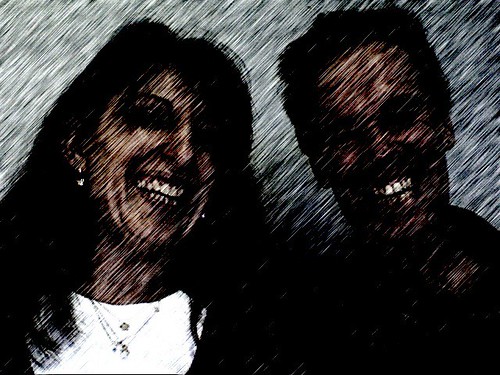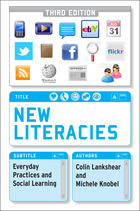Kudy Kalman, Irán Guerrero and Óscar Hernández, from the Laboratorio de Educación,
Tecnología y
Sociedad (LETS), have a new book out together titled, El Profe 2.0: La Construcciónde Actividades de Aprendizaje con Tecnologíasde la Información,la Comunicación y el Diseño (trans.: Teacher 2.0: Constructing
learning activities with information, communication and design technologies).
The book, written in Spanish and published in Mexico, is aimed at teachers and
contains an abundance of suggestions for incorporating all kinds of digital
literacies into a range of classrooms. The book is chock full of really
grounded, pragmatic examples of teachers actually engaging in suggested
processes and activities, and how these play out in real-world classroom
contexts. These actual cases are drawn from a four-year professional development
project working directly with a group of teachers in Mexican middle and high
schools that has been headed up by Judy Kalman, and on which both Irán
and Óscar
were key investigators.
The book is written from an explicitly sociocultural orientation,
and as such, grounds suggestions in a deep understanding of the everyday life
of teachers and students. It doesn’t idealise classrooms and focuses very much
on using freely available digital tools and services to leverage curriculum
demands into something satisfying and valuable for teachers and students alike.
Within this book, it’s apparent that a “Profe 2.0” is:
a teacher who understands and is in touch with how everyday people are using digital technologies to access meaningful content and ideas; finding, storing and sharing digital resources (e.g., images, videos, texts, sounds); and how affordable software and devices mean more and more that people are creating their own media and ways of conveying ideas and information. A Profe 2.0 recognises the value to be had in working collaboratively, in making room for peer feedback and accessing multiple sources of distributed intelligence and expertise, and blurring the teacher-student distinction in order to recognize everyone in the classroom as a learner and a someone with valuable contributions to make to any learning activity. All of the recommended pedagogical strategies and classroom activities described in this book tap directly into these principles and make the most of sociocultural understandings of what it means to learn, “be” and “do” online in current times.” (from the foreword).
This is a marvellous book for educators working with
teachers to develop their digital literacy take-up in classrooms, and who and
need a resource in Spanish. Oh, and I (Michele), wrote the Foreword, so I know
first hand just how good this book is!
// posted by Colin and/or Michele @
11:36 am 











